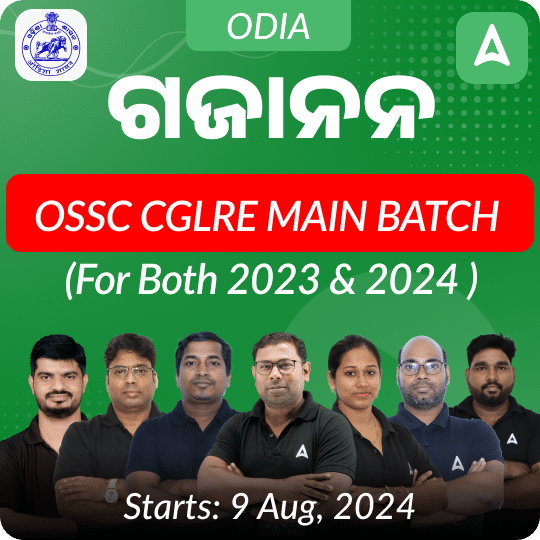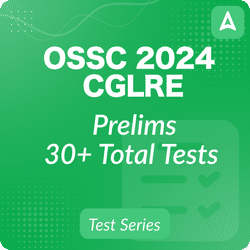Prepare for the OSSC CGL with these Top 30 Computer Awareness MCQs, designed to enhance your knowledge. Covering fundamental concepts in computing, from hardware to software and beyond, these questions aim to sharpen your understanding and boost your confidence. Whether you’re familiarizing yourself with basic terminology or delving into more advanced topics, this curated set ensures comprehensive preparation. Master concepts like operating systems, networking, and data structures, vital for success in the OSSC CGL examination. Elevate your computer awareness proficiency and ace the test with ease.
Top 30 Computer Awareness MCQs For OSSC CGL
Which operating system was released in 1985?
(a) Android
(b) Windows
(c) Mac OS
(d) iOS
Ans. (b) Windows
Which of the following was the first operating system released?
(a) UNIX
(b) MS-DOS
(c) iOS
(d) Windows Phone
Ans. (a) UNIX
The Chrome OS was launched in which year?
(a) 2008
(b) 2010
(c) 2011
(d) 2013
Ans. (c) 2011
iOS, the mobile operating system, was introduced in:
(a) 2005
(b) 2006
(c) 2007
(d) 2008
Ans. (c) 2007
Which operating system debuted in 1999?
(a) Firefox OS
(b) Android
(c) Blackberry OS
(d) Windows Phone
Ans. (c) Blackberry OS
Which OS was the first to be released among the following?
(a) Mac OS
(b) Windows Phone
(c) Firefox OS
(d) Android
Ans. (a) Mac OS
MS-DOS, an early operating system, was released in:
(a) 1981
(b) 1983
(c) 1985
(d) 1987
Ans. (a) 1981
Android was released in which year?
(a) 2007
(b) 2008
(c) 2009
(d) 2010
Ans. (b) 2008
The Firefox OS, known for its use in mobile devices, was introduced in:
(a) 2009
(b) 2011
(c) 2012
(d) 2013
Ans. (d) 2013
Windows Phone, a mobile OS developed by Microsoft, was launched in:
(a) 2008
(b) 2009
(c) 2010
(d) 2011
Ans. (c) 2010
Which of the following is not a component of DBMS?
(a) Data
(b) Users
(c) Software
(d) Internet
Ans. (d) Internet
What type of data is referred to as “Metadata”?
(a) Actual data entered by the user
(b) Data that describes other data
(c) Application structure
(d) Backup data
Ans. (b) Data that describes other data
In DBMS, which key uniquely identifies a record in a table?
(a) Foreign Key
(b) Primary Key
(c) Composite Key
(d) Candidate Key
Ans. (b) Primary Key
What is the main advantage of using a Database Management System?
(a) Increases redundancy
(b) Restricts data access
(c) Easy to manage large amounts of data
(d) No backup and recovery needed
Ans. (c) Easy to manage large amounts of data
Which language is commonly used to manage a relational database?
(a) HTML
(b) SQL
(c) Python
(d) Java
Ans. (b) SQL
What does the acronym DDL stand for in the context of DBMS?
(a) Data Distribution Language
(b) Data Description Language
(c) Data Definition Language
(d) Data Decision Language
Ans. (c) Data Definition Language
Which of the following best describes a “Foreign Key”?
(a) It is a key that uniquely identifies each record in a database
(b) It is a key used to link two tables together
(c) It is a key that is used to encrypt data
(d) It is a backup key used in case of primary key failure
Ans. (b) It is a key used to link two tables together
What is “Application MetaData” in DBMS?
(a) The actual data entered by the user
(b) The structure and format of queries
(c) Data about data
(d) The hardware used for storage
Ans. (b) The structure and format of queries
How does DBMS handle data redundancy?
(a) It increases redundancy to ensure data safety
(b) It eliminates redundancy by using a single database file
(c) It backs up redundant data for recovery
(d) It ignores redundancy issues
Ans. (b) It eliminates redundancy by using a single database file
Which component of DBMS is responsible for data backup and recovery?
(a) Users
(b) Hardware
(c) Software
(d) Data
Ans. (c) Software
What is a computer virus?
(a) A harmless software
(b) A beneficial program
(c) A malicious piece of code
(d) A system utility
Ans: (c) A malicious piece of code
Which of the following is an example of antivirus software?
(a) Windows Media Player
(b) McAfee
(c) Microsoft Word
(d) Adobe Reader
Ans: (b) McAfee
Malware is primarily designed to:
(a) Improve system performance
(b) Provide free software updates
(c) Disrupt computer operations
(d) Protect computer data
Ans: (c) Disrupt computer operations
A computer worm is a type of malware that:
(a) Is attached to other software
(b) Self-replicates and spreads through networks
(c) Requires user interaction to execute
(d) Disguises itself as legitimate software
Ans: (b) Self-replicates and spreads through networks
Which of the following best describes a Trojan horse?
(a) Self-replicating malware
(b) Harmless application
(c) Malicious software disguised as legitimate
(d) A tool for software development
Ans: (c) Malicious software disguised as legitimate
What is the primary function of authorization in computer security?
(a) Encrypting data
(b) Specifying access rights to resources
(c) Scanning for malware
(d) Improving system speed
Ans: (b) Specifying access rights to resources
Authentication is the process of:
(a) Encrypting information
(b) Comparing credentials to a database
(c) Developing software
(d) Installing updates
Ans: (b) Comparing credentials to a database
Who is a hacker?
(a) A person who creates antivirus software
(b) A person who breaks into computer systems
(c) A system administrator
(d) A software developer
Ans: (b) A person who breaks into computer systems
Phishing is typically carried out through:
(a) Direct physical access to computers
(b) Sending fake emails or messages
(c) Installing antivirus software
(d) Creating strong passwords
Ans: (b) Sending fake emails or messages
A spoofing attack involves:
(a) Installing antivirus software
(b) Impersonating another user or system
(c) Encrypting data for security
(d) Improving system performance
Ans: (b) Impersonating another user or system










